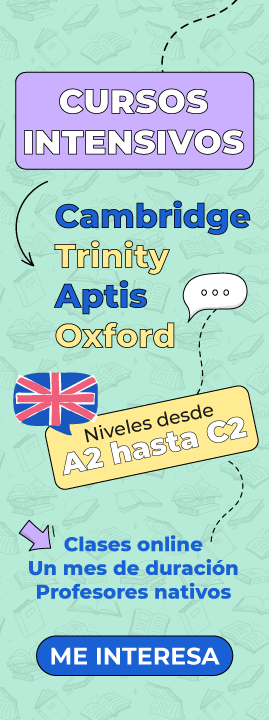Level B2 of Valencian

The B2 level certificate accredits a command of the use of the language, both oral and written, of an advanced independent user , which allows facing a range of communication situations with a certain degree of linguistic independence based on sufficient linguistic and communicative resources to express oneself in quite precise, fluent and correct way.
ÍNDICE DE CONTENIDOS
The person who opts for this certificate must be able to understand the main ideas of complex texts on both concrete and abstract topics, even if they are technical in the field of professional specialization; express themselves with a degree of fluency and spontaneity that makes interaction with native speakers possible without causing tension for any of the interlocutors; produce clear and detailed texts on a wide range of topics, and express a point of view on an issue, exposing the advantages and disadvantages of various options, or mediate in communication situations that are not necessarily everyday.
Exam structure
| Area | Value | Duration |
| Oral comprehension area | 20% | ± 20 minutes |
| Written comprehension area | 20% | 2 hours |
| Linguistic structures area | 15% | and 10 minutes |
| Written expression area | 20% | |
| Oral expression and interaction area | 25% | ± 25 minutes |
Objectives by areas
Oral comprehension
Can understand oral language face-to-face or conveyed through the media, whether it involves conversations or more complex speeches on familiar and unfamiliar topics.
- Understand all the information of what is said in any conversation.
- You can understand the content of communicative exchanges, transactions and daily activities.
- Understand the main ideas of an intervention with propositions and complex linguistic structures on concrete or abstract topics.
- Understand documentaries, live interviews, entertainment programs and fiction genres in audiovisual support, in standard register.
- She is able to understand most of the radio programs and oral texts, whether recorded or broadcast in standard register, and she is able to perceive in her the humor, tone, etc., of the speaker.
- You can use the linguistic and extralinguistic context as a means of increasing your understanding of the main points.
- Understand in an appropriate way nuances of intonation, pronunciation, rhythm and accent (irony, sarcasm, emotions, etc.).
- He is able to follow the general lines of lectures, talks, reports and other forms of academic or professional presentation, even if the language and concepts used are complex.
- It recognizes the basic characteristics of the records and the more general geographic varieties.
Written comprehension
He is able to understand written texts of diverse genres on general subjects and on subjects related to his field of specialization and his interests.
- Capture the main and supporting ideas and important details of complex texts on concrete and abstract topics.
- Understand argumentative texts on various topics.
- Can understand the content of contemporary literary texts .
- Understand formal texts of the Public Administration.
- Specialized texts as long as you can use a dictionary or other reference tools.
- Can understand humorous texts
Linguistic structures
He has a sufficiently broad linguistic repertoire to be able to make clear and detailed descriptions, express his point of view, interact and develop a sufficiently fluent communication without too many obstacles and using some complex sentences. He knows the forms and structures (phonology, spelling, morphology and syntax) of the linguistic system, which allow him to express himself quite fluently and without errors that impede understanding. Apply the general rules of spelling and morphosyntax and know the frequently used exceptions of the language.
- Pronounce clearly and correctly , even if you make an occasional mistake and sporadically the accent of the source language may appear.
- It can produce largely adequate and understandable written text , from start to finish, with fairly correct spelling and use of punctuation marks that make the text understandable and easy to read.
- He has sufficient knowledge of nominal and verbal morphology, which allows him to communicate with the requirements of the level.
- The competent enough to use , effectively, the various parts of speech to form most of syntactic structures. Know the forms and functions of weak pronouns when they appear alone and in binary combinations.
- He masters a wide lexical and phraseological repertoire that allows him to express what he wants to say without much trouble.
- Can identify lexical interferences and can replace them with genuine expressions.
- It has a competence that allows it to establish semantic relationships between words and to select between different options.
- He is able to produce well-constructed texts by applying general rules of textual cohesion.
Written expression and interaction
- Write clear and detailed texts on a wide range of topics, as well as synthesize and evaluate information and opinion from other sources.
- Express news and points of view effectively in writing , and refer to the points of view of others. You can interact by starting the written speech, and ending it when you are supposed to. You can collaborate on conversational texts written on everyday topics all confirming your understanding or inviting to participate.
- Able to write an elaborate, clear, and detailed review or cultural critique of a movie, book, or play.
- Write an essay, report, article, or opinion letter to the editor that develops an argument, presents arguments for and against a particular point of view, and explains the advantages and disadvantages of the different options.
- Is able to summarize information and arguments from different sources
- Write personal letters, emails, etc., in a personal and more general sphere, which convey degrees of emotion, emphasize the personal relevance of events and comment on the news and opinions of your interlocutor.
- You can summarize a wide range of texts (about real or creative events, news, interviews, documentaries, novels, films, plays, etc.), commenting on or contrasting the main points of view and themes.
- You understand a clearly structured lecture and can take notes on things that are important to you, even if you tend to focus on words and therefore lose some information.
- You are able to ask written questions to show that you have understood what the interlocutor has wanted to tell you in writing, and to get clarification of ambiguous aspects.
- Produce a clear, fluid and well-structured speech that demonstrates a fairly controlled use of organizational structures and cohesion mechanisms typical of the formal written language.



